
Free Shipping on Orders over $49 (Retail Only)
Shop Now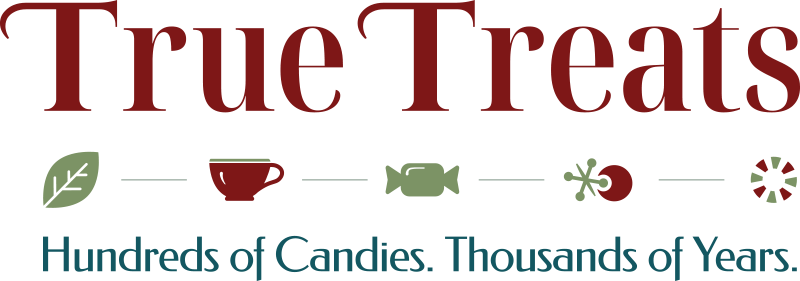

 GOOD & PLENTY:HTTPS://TRUETREATSCANDY.COM/PRODUCT/GOOD-N-PLENTY/
GOOD & PLENTY:HTTPS://TRUETREATSCANDY.COM/PRODUCT/GOOD-N-PLENTY/ NECCO WAFERS: https://truetreatscandy.com/product/necco-wafers/
NECCO WAFERS: https://truetreatscandy.com/product/necco-wafers/ GIBRALTERS: https://truetreatscandy.com/product/gibralter/
GIBRALTERS: https://truetreatscandy.com/product/gibralter/ TURKISH DELIGH: Turkish Delight, 10 Piece – True Treats Historic Candy (truetreatscandy.com)
TURKISH DELIGH: Turkish Delight, 10 Piece – True Treats Historic Candy (truetreatscandy.com) GUMMIES: https://truetreatscandy.com/?s=GUMMY&post_type=product
GUMMIES: https://truetreatscandy.com/?s=GUMMY&post_type=product
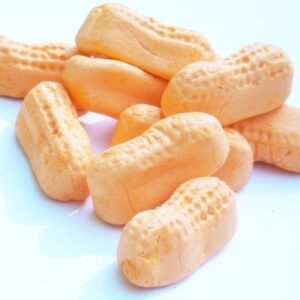
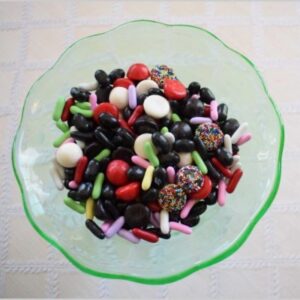
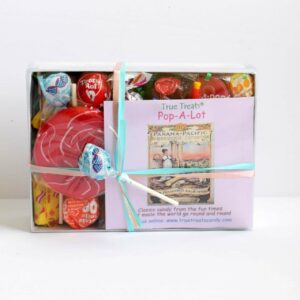
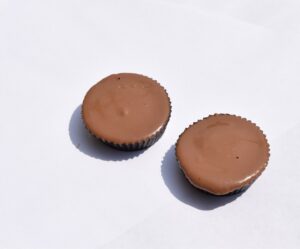
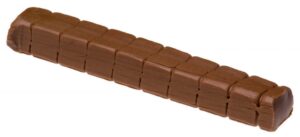

The story of the jelly bean is remarkable, spanning cultures and centuries, involving sultans and ancient apothecaries, wars and great literary figures. It began around 226-652 CE in the Persian Empire where the ruling power, the Sasanids, enjoyed a sweet called “abhisa” made of honey, fruit syrups, and starch. By the 9th century, it appeared in the Arab apothecaries as a remedy for sore throats called “rahat ul-hulküm,” later shortened to “lokum,” meaning “throats ease” which many still use today. The sweet had a more or less humble life until the 1750’s when Sultan Abdul Hamid I fell in love with it and, according to legend, had his chefs prepare daily batches to satiate his many wives. Trade being what it was, word spread and folks in England started enjoying it, too, renaming it “lumps-of-delight.”
Then, in the mid-1800s, it took on a literary life, starting with Charles Dicken’s “The Mystery of Edwin Drood” (1870) where character Rosa Bud announces: “I want to go to the Lumps-of-Delight shop.” Soon, the candy was called “Turkish Delight”: a name which has endured in the English-speaking world ever since. Most notably, the Turkish Delight appeared in C.S. Lewis’ classic, “The Lion, the Witch, and the Wardrobe” where it reigned as young Edmund Pevensie’s greatest passion. Thanks to the book and, more recently, the movie, most Americans seem to know the Turkish Delight although far fewer have tried it. Or so they think.
War and Love in the U.S.A.
In the mid-1800s an unknown candy maker panned the confection–a 16th century process of rolling a nut, seed, sugar crystal or other food in layers of sugar for a smooth shell. Soon after, in 1861, Boston candy-maker William Shrafft reportedly encouraged Bostonians to send his jelly beans to Union soldiers in period-style care packages.


Eventually that sweet become part of a new confectionery family known as “penny candy,” an inexpensive and fun sort of confection that allowed everyone, rich and poor, access to sweets. The Brooklyn Daily Eagle mentioned the candy on October 2, 1898 and soon a pound was selling at nine to twelve cents. It was in this new, penny candy guise that the panned delight took on a yet another name: the “jelly bean.”
But why “jelly bean”? Obviously it resembled a bean. But culturally, the name sprouts up everywhere; it referred to a fellow who shows up for a date well dress, nicely coifed, but has nothing else going for him. F. Scott Fitzgerald wrote a story “The Jelly Bean” in 1922, in which he wrote: “’Jelly-bean’” is the name throughout the undissolved Confederacy for one who spends his life conjugating the verb to idle in the first person singular—I am idling, I have idled, I will idle.” And Phil Harris wrote a song “Jelly Bean (He’s a Curb-Side Cutie)” in 1940. In other words, this guy was useless.
The Jelly Bean Shines

The jelly bean won its most enduring acclaim around 1930, as an Easter candy, reasons unknown except that, since the late 1800s, candy-makers were busy finding a niche at religious events, the stripped candy cane (late 1800s) an excellent example. About 40 years later, enter the Jelly Belly. Candy distributor and entrepreneur, David Klein, came up with the idea to infuse the entire bean with flavor, not simply the shell. And those flavors – why settle for overly sweet, washed out fruit flavors? Why not make them bold, unusual, delicious? As for the name – Klein was watching blues musician Lead Belly perform on the 1970s sitcom “Sanford & Son.” Only, Klein thought the name was “Jelly Belly…” And the rest is food marketing history.
Since then, the jelly bean has made appearances everywhere, from movie theater concession stands to corner store displays. They showed up at a presidential inauguration in1981 and were the first candy to go on a space mission in 1983. In fact, people ate enough jelly beans last year to circle the earth five times, so says the Jelly Belly company on their Web site.

Which leads to the not altogether happy ending of the jelly bean story. Klein was a candy genius but not a candy cook. So he hired his friends at the Herman Goelitz Candy Company to make the candy for him. The Goelitz family was so inspired they decided to buy Klein out (aka steal) the candy, concept, name, and flavors. After a five-year legal battle, and a movie on the subject produced by Amazon, Klein received a small settlement. The multi-billion dollar company Goelitz family company is

now called “Jelly Belly.” Their multi-billion dollar owners have left Klein a scant legacy – he can publicly acknowledge he invented the candy.
Of course, events like these, large and small, are part of the landscape of human experience and demonstrate the timeless importance of comfort foods like candy.
The universe of “retro” candy is a large one, spanning over 150+ years – Wax Lips (early 1900s), Good n’ Plenty (1893), NECCO Wafers (1847) and such sensations as Fruit Slice Gum (1960s) and Turkish Taffy (around 1931)… to name a few. But wedged into this clutter of wrappers, flavors and advertising stints are candies long forgotten but still among us – alive, well, and ever fascinating. Here is a sample of some of them:
Cherry Cocktail (1926). Still made by the family-owned Idaho Spud Candy Company which opened in 1901. The candy bar is not your everyday cherry cordial, but a “whole maraschino cherry crème center buried in a mixture of ground peanuts and milk chocolate” the company says. The result – no classic smooth, chocolate coating but a textured mound of chocolate.

Pulled Creams (around 1840s). If you like cake frosting, you will love these – smooth, creamy and oh-so-sweet. While the Kentucky-based shop started making these sweets in 1921, they originated in the mid-1800s with the first penny candies. By the way – those early candies gave working class kids their first taste of affluence, as the low prices offered them an opportunity to enter a store and buy something. The sweet promise of success.

Contraband. Actually, these peppermint-molasses candies (late 1800s) have always been legal and were a favorite hard candy. In 1935, the candy store owner was enamored by the Prohibition-era G-men, James Cagney and bootleggers. Like many others of the time, he gave children broken pieces of candy as the passed by to school. Of course, candy was forbidden in school so, in the Prohibition-era spirit, he named the candy “Contraband.” (His other hard candies were called…bullets).

Penny candy has been a favorite for kids since the burgeoning industrial age of the mid-1800s. They could buy an array of sweets in general stores, tobacco stores, and apothecaries. The Ohio Journal of Education, in an 1857 publication, Lessons in Common Things, listed a few of the selections: Cream candy, popcorn, peppermint, molasses, rose, clove, butterscotch, sugar plums, lemon drops, lemon candy, peppermint drops, French kisses, cinnamon, ice-cream, wintergreen, sour drops, horehound, lavender, gum drops, vanilla, Rock, birch, cats-eyes, and kisses.
Look carefully at this list and you’ll notice a difference from lists of today which would more likely read: Dum Dums, Ring Pops, Smarties, and, on a good day, NECCO Wafers. In other words, then we had candy. Now we have brands. And speaking of brands, it’s worth asking why the NECCO wafer, originally called the Chase Lozenge, or generically a soft paste candy, didn’t make the list. Made in 1847, it was among the nation’s first, if not the first, penny candy.
Here’s why: up through the mid-1900s, candy was a blend of local, handmade treats and some sold by peddlers and salesmen. Each town had their own assortment, many ethnic, courtesy of immigration. In the 1920s, for example, up to 100,000 varieties of candy bars were on the market, compliments of small candy-making enterprises, some produced in the kitchen or basement of the business owners’ homes. Candy, like all food, told a story about places and people that were shared for a penny or less.
I know, I don’t have to tell you, candy today is all about brand, such as Ghirardelli, Lindt, Hershey and many others who, ironically, got their start in the 1800s. Today’s candy gets more and more sour and the chocolate gets darker and darker or more and more fanciful, depending on whether it’s targeting health-conscious grown-ups or kids. But it doesn’t really vary that much. Even the small family-owned candy stores are startlingly alike: chocolate covered nougats and creams of tasty but limited range.
Somewhere, buried inside the ingredients list, are stories but nothing like the all those other stories that never make the shelves. Who knows what the candies taste like and the stories reveal, but it would be amazing to find out.
Yesterday, I gave a talk at the D.G. Cooley Elementary School in Berryville, Virginia, about the history of candy with plenty of samples as we went. Skeptics, such as health professionals or parents who fastidiously limit their children’s intake of sugar, may cringe. Candy? In the classroom? Seriously? No worries – I’m on their side.
But first, a little background. Candy is uniquely qualified for teaching children. They can relate to it directly – it’s not abstract, difficult, or about grown-up achievements. It’s about something in their realm and so, about them, complete with positive associations of candy bags at birthday parties and salt water taffy on family vacations. Just as important, candy gives them a visceral learning experience that touches all their senses- they see, smell, taste, touch, and even hear the sound of candy crunching.
 The best part of candy in the classroom, though, is the multi-faceted education that the young students literally consume. The early history of our nation, for example, is interwoven with cane sugar, the primary reason for slavery and a central component of the American Revolution. The stories through time are fascinating and the experience immediate: the children taste the chocolate Thomas Jefferson and John Adams ate, the candy bars the World War I soldiers relied on for health and nourishment, and the 10th century medicine used in Arabic apothecaries, now known as the Turkish Delight.
The best part of candy in the classroom, though, is the multi-faceted education that the young students literally consume. The early history of our nation, for example, is interwoven with cane sugar, the primary reason for slavery and a central component of the American Revolution. The stories through time are fascinating and the experience immediate: the children taste the chocolate Thomas Jefferson and John Adams ate, the candy bars the World War I soldiers relied on for health and nourishment, and the 10th century medicine used in Arabic apothecaries, now known as the Turkish Delight.
Other lessons relate to the Industrial Revolution and what it reveals about the foods we eat. Students sample the licorice root – yes, a real root – then travel through time to the licorice and the red twist. They try the cacao bean then the industrialized milk chocolate. They discover that all through history people ate what came from the ground and tree as well as the fish, birds, and livestock that lived. Today our experience of food frequently begins in the supermarket, with a range of ingredients, revealed on the all-important label. In the process, they also learn about marketing from branding to market-driven ingredients in such favorites as the Pixy Stix, which has colors and smells specially added to the actual ingredients to enhance the eating experience.
And those lessons are only the beginning! No matter what the content, though, the children leave better informed and more able to make wise decisions about the foods they love. All this in an hour or so of fun.
If you’re a teacher and want to know more about True Treats’ programs, please contact us. If you want to use candy in the classroom yourself, feel free to call or e-mail us for advice.




